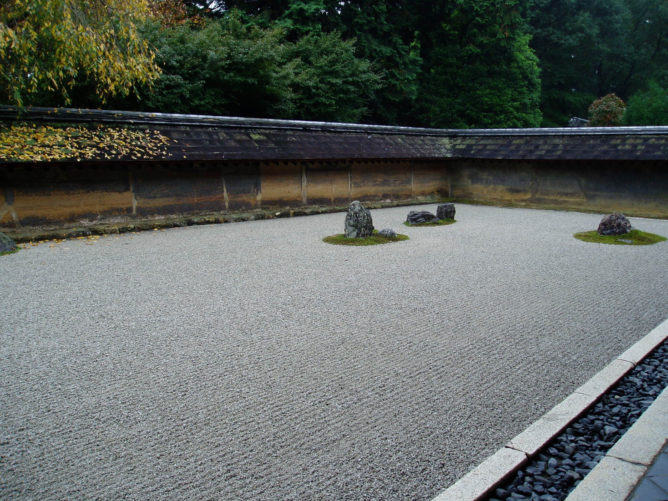
What we call “I” is just a swinging door that moves when we inhale and when we exhale.
Shunryu Suzuki
A tradition I have been investing my energy into recently is Soto Zen Buddhism.
I didn’t start the semester expecting to do a deep, physical, intellectual, and spiritual dive into Zen Buddhism this semester, but I think the freedom from commitments and a desire to move toward authenticity has led me on this path.
Soto Zen Buddhism, especially in the America tradition, is a philosophy of life around the ideas of emptiness, suffering, one-ness, non-violence, gratitude, change, and truth. It is practiced through a commitment to zazen, seated meditation.
The mediation is not guided or prescribed, but by sitting in stillness and silence one can begin to understand what it means to be. Many zen centers, including the one I practice at in Austin, has three or four opportunities a day to sit zazen with the zen community.
After noticing shifts in my manner, thought patterns, and stress after a few weeks of zazen, I began to wonder if I could include meditation more directly into my teaching routine.
Since then I’ve experimented with various forms of seated meditation before and after I teach my students. The routine I’ve settled on is a brief, 2-5 minute meditation in the practice room where I teach immediately before and after my students are with me for our lesson.
To be specific, my routine is as follows…
- Go to my practice room, unpack my violin and teaching materials
- Turn my phone on airplane mode, set my phone timer to alert me a minute before the lesson begins
- Sit cross legged on the floor, follow my breath in and out
- Teach lessons
- Pack up my teaching materials
- Sit cross legged on the floor, follow my breath until I feel ready to leave
This routine has served me extremely well on Mondays, Tuesdays and Wednesdays. On these days I have three to four hour long stretches of teaching. I feel that the mediation helps me slip into a zone of presence and readiness that just walking into the room to teach hadn’t.
I can directly compare my experience meditating on Monday and Wednesday to not mediating on Thursday and Friday. When I don’t meditate I am more likely to jumble my words, forget parts of the lesson plan, and find my mind wandering.
On Mondays, Tuesdays, and Wednesdays I experience the following results.
- Focus and awareness. Instead of paying attention to the story I’m telling myself, I pay attention to the reality of the present moment. I’m far less likely to get caught up in frustration with the situation. When I listen I hear what students are playing, but also what them mean to play. I hear what students and parents say, but also what they mean to say.
- Patience. Even as I pick up on more details, after meditating I’m less likely to act impulsively. It is easier for me to store information and to mull it over throughout the lesson, rather than commenting ineffectively on the matter in the beginning of the lesson. On the subject of patience, Shunryu Suzuki commented, “Everything you do is right, nothing you do is wrong, yet you must still make ceaseless effort.”
- Gratitude. Because I start and end the lesson in stillness, experiencing merely what it feels like to be alive, and not being pulled addictively to communication or food or information, I enter the lesson clear that teaching violin is exactly what I want to do with my time and energy. I find myself grateful to be doing the thing that I want to do. I’m grateful that students and parents trust me in taking the journey with them. And I’m grateful for all of the determined and generous musicians before who have passed on their craft to this generation.
- Cooperative spirit. It’s not teacher versus the student, the student exists beyond me, and our relationship exists beyond ourselves. Because I challenge that construct of individualism before student’s even walk in the door, I think my student’s experience me in a different way. The feeling is one of co-operation, of teamwork, of love. Suzuki Roshi said, “If your practice doesn’t include every one of us, it is not true practice.”
Even if I hadn’t explored this meditative practice via zazen, I’m sure I would have recognized the value of silence and stillness on my ability to teach in the long term.
Instead of checking email or messages, practicing violin, or planning up the very last moment before teaching, consider a brief commitment to sitting, mind open and body aware. By slowing your breath, becoming aware of tension and anxiety, calming thoughts and returning to the present, you are much more likely to serve to the best of your ability the unique, beautiful student who walks through your door.
